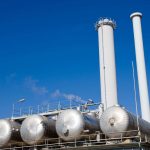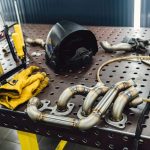The engine – the heart of your vehicle. This mechanical wonder transforms energy into motion, enabling you to traverse roads and highways. Yet, many are unaware of the intricate dance of elements within the engine that makes this possible. The air-fuel mixture, for instance, plays a critical role in engine performance.
For turbocharged cars, specifically those in the UK, balancing this mixture can significantly enhance power and performance. This article will guide you through the nuances and methods of optimizing the air-fuel mixture for better performance in UK-spec turbocharged cars.
In the same genre : Essential Factors to Consider When Selecting Winter Tires for Your Sports Car in the UK
Understanding the Basics: Combustion, Air-Fuel Ratio, and Turbo Systems
Before diving into optimization techniques, it’s essential to understand a few fundamentals about combustion, air-fuel ratio, and turbo systems. In an internal combustion engine, the fuel is mixed with air, and then this mixture is ignited, releasing energy that propels the vehicle. This process is significantly influenced by the air-fuel ratio, which is the proportion of air to fuel in the combustion process.
The turbo system, or turbocharger, is a device used to enhance engine performance and efficiency. It works by using the engine’s exhaust gases to drive a compressor, which then forces more air into the combustion chamber. This increased air, when mixed with fuel, can result in more power output from the engine.
In parallel : How do you implement a DIY ceramic coating on your car in the UK climate?
Balancing the air-fuel mixture is crucial in a turbo system. Too much air or too little fuel can cause the engine to run lean, potentially leading to high temperatures and engine damage. Conversely, too much fuel or too little air may result in a rich mixture, causing poor energy efficiency and increased consumption.
Tuning the Air-Fuel Ratio for Optimal Performance
To get the most out of your turbocharged car, fine-tuning the air-fuel ratio is key. This ratio is dependent on various factors such as throttle position, engine load, temperature, and pressure. For racing applications, a ratio of 12.5:1 is considered ideal for maximum power output. However, this may be slightly different for daily driving conditions where fuel efficiency is more significant.
Using a wideband O2 sensor can help monitor and adjust the air-fuel ratio. This tool provides real-time data, enabling you to make quick and accurate adjustments. Additionally, advanced engine management systems have auto-tune functions that constantly monitor and adjust the air-fuel ratio based on engine conditions.
Leveraging the Power of Turbo Systems
The magic of a turbo system lies in its ability to boost the engine’s power output without significantly increasing consumption. However, managing the turbo system effectively requires careful attention to the air-fuel mixture.
The EGR (Exhaust Gas Recirculation) system can play a pivotal role in this. It recirculates a portion of the engine’s exhaust back into the combustion chamber. This reduces the oxygen content in the air-fuel mixture, lowering combustion temperatures and increasing engine efficiency.
Moreover, a well-maintained turbo system will ensure consistent performance. This includes regularly checking the turbo for leaks or blockages, and ensuring the compressor and turbine wheels are in good condition.
High-Performance Fuels and Engine Maintenance
Finally, the type of fuel you use and how you maintain your engine will impact the air-fuel mixture’s optimization. High-performance fuels, specifically those with a high octane rating, can withstand higher pressures and temperatures without detonating prematurely. This allows for a more consistent and efficient combustion process, optimizing the air-fuel ratio.
Regular engine maintenance is also essential. This includes checking and replacing spark plugs, cleaning or replacing air filters, and ensuring the fuel injectors are clean and functioning properly. All these elements play a vital role in the overall efficiency of the air-fuel mixture.
Dialing in the Perfect Air-Fuel Ratio: Advanced Techniques
For those seeking to push their turbocharged cars to the limit, advanced techniques can help dial in the perfect air-fuel ratio. One method is water/methanol injection. By injecting a water/methanol mix into the air intake, the intake charge is cooled, allowing for a denser air-fuel mixture. This can result in high power gains.
Furthermore, employing variable valve timing can enhance the combustion process. By adjusting the timing of the intake and exhaust valves, more air can be drawn into the engine at specific RPM ranges, improving power and efficiency.
Lastly, using an intercooler can help cool down intake air after it has been compressed by the turbo, leading to a denser air-fuel mixture and increased engine performance.
As you can see, optimizing the air-fuel mixture in turbocharged cars is not a one-size-fits-all approach. It requires a nuanced understanding of your vehicle and its engine, as well as a willingness to experiment with various techniques and modifications. But with patience and perseverance, you can unlock the full potential of your turbocharged vehicle.
The Role of EGR Rate and Boost Pressure in Air-Fuel Balance
Understanding and effectively utilizing the EGR rate and boost pressure in a turbocharged engine can massively impact its performance and efficiency. In the world of forced induction engines, these two factors are pivotal in maintaining an optimal air-fuel mixture.
The EGR or Exhaust Gas Recirculation system, as previously discussed, recirculates a portion of the engine’s exhaust back into the combustion chamber. This technique decreases the oxygen content and lowers combustion temperatures, enabling the engine to run more efficiently. The rate at which this process occurs, commonly referred to as the EGR rate, plays a crucial role in determining the balance of your air-fuel mixture. By controlling the EGR rate, you can fine-tune the engine to reach the desired temperature and fuel consumption levels, thereby improving thermal efficiency.
Meanwhile, boost pressure refers to the pressure created by the turbocharger’s compressor that forces more air into the combustion chamber. This pressure significantly influences the air-fuel mixture, with higher boost pressure resulting in a richer mixture. However, managing boost pressure is a delicate task. While high pressure can improve power output, it can also cause higher temperatures and increased fuel consumption. Therefore, it’s essential to strike a balance, optimizing boost pressure for improved performance without compromising fuel economy.
Adjusting the EGR rate and boost pressure to suit different operating conditions can be a complex task. However, leveraging tools like a pressure ratio controller or an engine management system can simplify the process, allowing you to achieve optimum performance out of your turbocharged vehicle.
Conclusion: Unleashing the Potential of Turbocharged Cars
Optimizing the air-fuel mixture for better performance in UK-spec turbocharged cars is an intricate process. It demands a thorough understanding of the internal combustion engine, the air-fuel ratio, and the workings of a turbo system. Factors like the EGR rate and boost pressure play a vital role in this balancing act, and fine-tuning these elements can significantly enhance both power output and fuel economy.
Various techniques, from using high-performance fuels and maintaining your engine to employing advanced methods like water/methanol injection and variable valve timing, can help optimize the air-fuel mixture. However, remember that each vehicle and engine is unique. What works best for one might not be the same for another.
The journey to unlocking the full potential of your turbocharged car can be complex, requiring both patience and perseverance. However, the reward of enhanced performance and improved efficiency makes it well worth the effort. As you delve deeper into the realm of turbocharged cars, remember that knowledge is power. The more you understand your vehicle, the better equipped you’ll be to optimize its performance.
Whether you are a racing enthusiast looking to maximize power output or a daily driver prioritizing fuel efficiency, optimizing the air-fuel mixture can significantly transform your driving experience. With continuous learning and experimentation, you can truly unleash the potential of your turbocharged vehicle.











